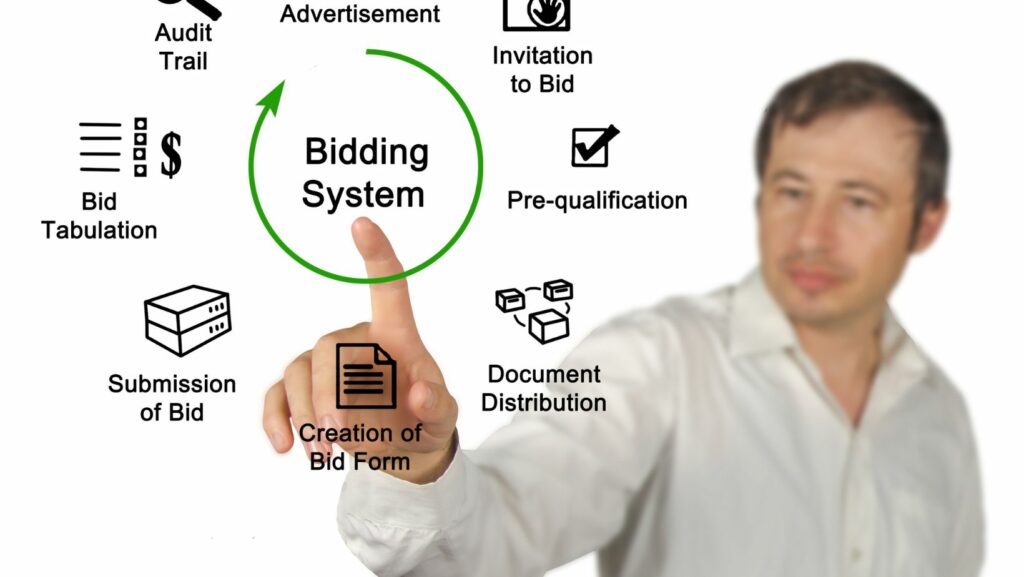Choosing the right bidding strategy for your campaign can make all the difference in achieving your marketing objectives. Whether you’re looking to increase brand awareness, drive traffic, or boost conversions, understanding the key factors that influence this decision is crucial. It’s not just about setting a budget; it’s about aligning your strategy with your overall business goals.
What Are Key Factors to Keep in Mind When Choosing a Bidding Strategy for Your Campaign?
 Choosing the right bidding strategy is crucial for the success of a marketing campaign. It entails understanding several key factors that can significantly impact the campaign’s return on investment (ROI).
Choosing the right bidding strategy is crucial for the success of a marketing campaign. It entails understanding several key factors that can significantly impact the campaign’s return on investment (ROI).
Bidding in campaigns involves the process of setting a price one is willing to pay for a specific action by a target audience within a digital advertising campaign. This action might be a click, view, or form submission, depending on the campaign goals. The strategic bid amount directly influences how often an ad is displayed and its competitiveness in the marketplace. Thus, effective bidding maximizes exposure while maintaining cost-efficiency.
Common Types of Bidding Strategies
There are several bidding strategies commonly used in digital marketing campaigns:
- Cost Per Click (CPC): Advertisers pay each time a user clicks on their ads. This strategy is ideal if the goal is to drive traffic to a website.
- Cost Per Impression (CPM): Advertisers pay for every thousand impressions their ad receives. It’s suitable for increasing brand awareness.
- Cost Per Action (CPA): Payments are made when users take a specific action, such as making a purchase or signing up for a newsletter. It’s highly effective for driving conversions.
- Cost Per View (CPV): This applies mainly to video advertisements, where advertisers pay for each view.
- Cost Per Engagement (CPE): This strategy charges advertisers only when users interact in a predefined way with the ad, often used in social media campaigns.
Key Factors in Choosing a Bidding Strategy
Selecting the right bidding strategy is essential for the success of any marketing campaign. Here, key factors such as campaign goals, budget, and understanding the target audience are discussed to help marketers make informed decisions.
Campaign Goals and Object source
 Choosing the appropriate bidding strategy starts with a clear understanding of your campaign’s goals. If boosting brand awareness is the goal, strategies like Cost-per-Thousand-Impressions (CPM) might be ideal, allowing your ads to reach a maximum number of people. Conversely, if the focus is on increasing sales or leads, Cost-per-Action (CPA) where you pay for conversions, might be more effective. Marketers must ensure that the chosen strategy directly supports the objectives they aim to achieve.
Choosing the appropriate bidding strategy starts with a clear understanding of your campaign’s goals. If boosting brand awareness is the goal, strategies like Cost-per-Thousand-Impressions (CPM) might be ideal, allowing your ads to reach a maximum number of people. Conversely, if the focus is on increasing sales or leads, Cost-per-Action (CPA) where you pay for conversions, might be more effective. Marketers must ensure that the chosen strategy directly supports the objectives they aim to achieve.
Budget Considerations
The budget plays a pivotal role in determining which bidding strategy to employ. Strategies requiring higher investments might not always align with smaller budgets. Cost-per-Click (CPC) is often preferred for limited budgets as it balances cost with traffic quality, paying only when someone clicks on the ad. It’s crucial for marketers to match their bidding approach with financial constraints to avoid overspending and to maximize return on investment.
Impact of Bidding Strategy on Campaign Performance
Selecting the right bidding strategy directly influences a campaign’s performance by determining how effectively it engages its target audience and uses the budget. Markoften/: when marketers choose a strategy that aligns with their campaign objectives, they see improved ad visibility, higher engagement rates, and better overall ROI.
Influence on Ad Visibility
 Bidding strategies like Cost-Per-Thousand Impressions (CPM) or Cost-Per-Click (CPC) can dramatically affect how often ads are displayed. A higher bid may secure more prominent ad placements, thus increasing the likelihood of ad interaction and engagement. Marketers often experience that campaigns with optimized CPM bids achieve greater visibility, leading to increased brand awareness.
Bidding strategies like Cost-Per-Thousand Impressions (CPM) or Cost-Per-Click (CPC) can dramatically affect how often ads are displayed. A higher bid may secure more prominent ad placements, thus increasing the likelihood of ad interaction and engagement. Marketers often experience that campaigns with optimized CPM bids achieve greater visibility, leading to increased brand awareness.
Engagement Rates
The choice of bidding strategy impacts user engagement with the ads. For instance, Cost-Per-Acquisition (CPA) bidding focuses on converting users, which can lead to higher engagement rates as the campaign is optimized for actions rather than just views. Campaigns utilizing CPA often record higher engagement metrics, indicating a direct correlation between the bidding strategy and user interactions.
Budget Efficiency
Efficient use of the campaign budget is critical, and the bidding strategy plays a pivotal role in this aspect. Strategies like CPC allow for tight control over expenditure by paying only when an action is taken.



